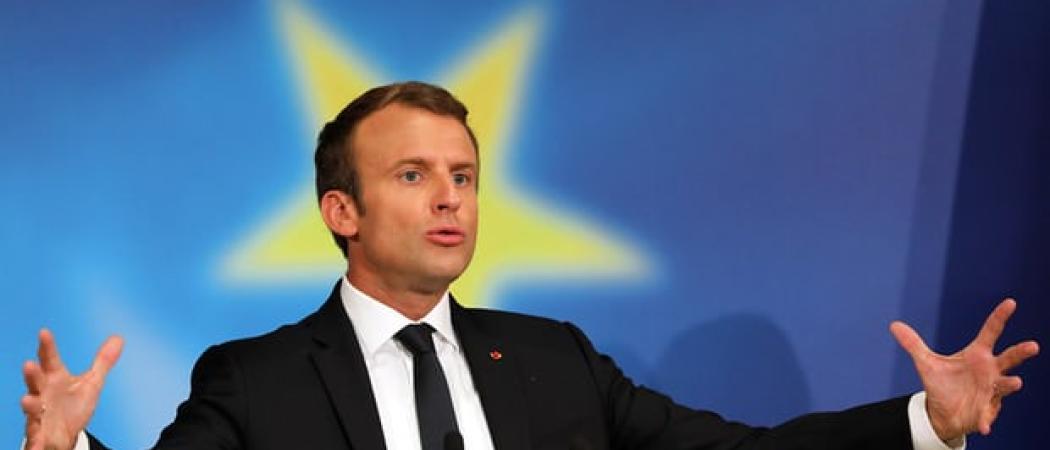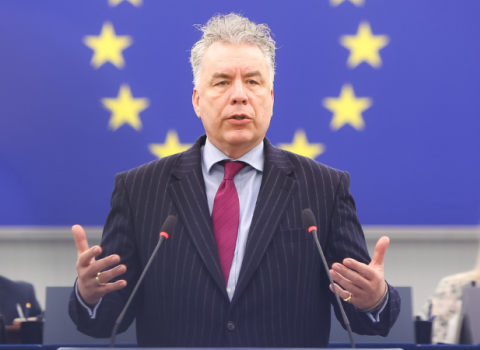French President Emmanuel Macron has proposed the creation of a European innovation body modelled on Darpa. Researchers at the Jacques Delors Institut in Berlin explore the agency’s potential structure and remit

Photo: Ludovic Marin / Reuters
In his speech at the Sorbonne University in September Emmanuel Macron called for the creation of a new European funding agency “for disruptive innovation” based on the US Defense Advanced Research Projects Agency (Darpa), the research arm of the Pentagon which has spawned some of the most transformative inventions of our times.
Macron’s vision is that such an agency would help the EU catch up with the US and Asia in breakthrough technologies such as artificial intelligence and biotechnology.
Yet for now, there is little detail. In a blog post published on Monday, we take a closer look at what establishing a European equivalent of Darpa would actually involve.
We feel that a detailed proposal first needs to answer two questions: What role is the agency to play in innovation and industrial policy? Moreover, how is it to be structured?
While it is early in the creation process, in our view, a European Darpa could simultaneously boost strategic technology fields and member state e-government, and be led by either the European Commission or member states.
Learning from Darpa
Macron is not the first to turn to Darpa as a role model for promoting innovation in Europe. This begs the question: What is so special about Darpa? How does it function and how has such a relatively small US agency been an enabler of so many technological breakthroughs?
From its foundation in 1958, Darpa’s mission has been to fill the gap between blue sky academic work and the incremental innovation done by the military.
Projects funded by Darpa contributed significantly to the development of silicon chips, the internet, stealth fighters and the global positioning system. Without strategic early-stage funding, by Darpa and other US government agencies, in projects that led on to voice recognition, microprocessors, touch screen and other technologies, the iPhone would not have been possible.
Darpa has around 220 employees and an annual budget of $3 billion. It employs 100 programme managers to oversee some 250 research and development programmes in six specialised fields, including biotechnology, information innovation and microsystems technology. Managers, who must have a record of excellence in their field, are recruited on short-term, three to five year contracts from academia, industry and other government agencies. This approach to attracting the best talent – and to continuously refreshing it – is acknowledged as a cornerstone of Darpa’s success.
Three other features of how Darpa operates are central to its ability to translate basic research into technology breakthroughs. First, the agency is highly autonomous and flexible. Project managers operate in a flat hierarchy and can engage and disengage quickly from research projects.
Second, Darpa programmes are strongly mission-oriented: technical offices define the technological capabilities they seek and curate a research agenda. Third, Darpa takes on high risk projects and tolerates failure as an accepted part of the mission of driving breakthrough scientific progress in a short period.
How to recreate Darpa in Europe
Recreating the Darpa alchemy will not be an easy task. Certainly, the starting point should be to adopt the features described above. However, we feel the agency should set out with two complementary goals.
First, it should be an instrument of a positive and forward-looking industrial policy, helping to foster advances in areas that are strategically important to the European economy. That could include industries where the Europe has an existing comparative advantage and which digitisation has the power to make more competitive in the future, such as the machinery and automotive industries.
The agency could also strategically invest in fields in which EU countries have committed to achieving high end societal goals, such as the low-carbon economy, or data security and protection.
Second, EU governments could also use the agency for common public procurement and charge it with the research and development of specific applications that improve the quality of public services.
One example would be a breakthrough in artificial intelligence-driven voice recognition and developing language assistants for simultaneous translation to all 24 European languages.
A focus on civilian applications would be a clear departure from the mission of Darpa, which mainly serves the US military. We consider a European Darpa-like agency could be involved in defence, but see a greater potential for civilian applications.
Governance
We envision this agency as a fully-fledged EU agency for the EU-27, or within a more deeply integrated euro area, or as an intergovernmental project with a possible French-German nucleus.
The new agency would need a governance structure with high autonomy over grant awards and management. Leadership, were it to come from the European Commission or governments, should be at one remove from the day-to-day running of the agency.
A Brussels-led organisation could be knitted into existing EU innovation and research policies, areas in which the EU already manages a significant budget. Furthermore, governance within the EU framework could foster independence from national influence.
Channelling EU money through a new Darpa-style agency is likely to be contentious however, with the lion’s share inevitably going to research institutes and industries in member states that are already innovation leaders.
The French administration has also floated the idea of setting up the agency as part of a future investment budget for the euro area (itself a contentious proposal), which might consequently be run outside the EU’s traditional structures.
A government-led setup, on the other hand, would have the advantage that participating countries view it as an extension of government, possibly linking it more closely to national ministries and agencies that would act as direct beneficiaries through procurement.
As a project of deeper integration between a few pioneering member states, the agency could get off the ground quicker. At the same time, the project would be dependent on political support among the largest contributors, potentially jeopardising its autonomy.
Paul-Jasper Dittrich and Philipp Ständer are both research fellows at the Jacques Delors Institut – Berlin.






 A unique international forum for public research organisations and companies to connect their external engagement with strategic interests around their R&D system.
A unique international forum for public research organisations and companies to connect their external engagement with strategic interests around their R&D system.